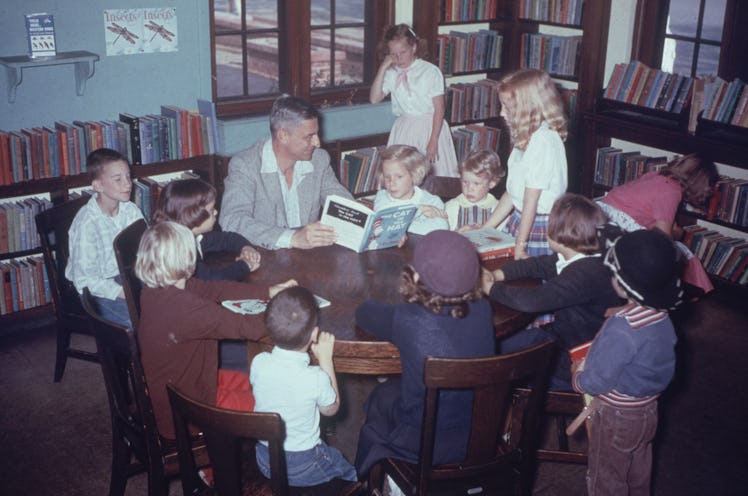Why Reading Dr. Seuss Is So Good For Your Child’s Development
Superbly silly syntax.

Theodor Seuss Geisel was a magician. The man better known as Dr. Seuss used sleight of hand to make readers believe his seemingly silly rhymes were just that. But the good doctor’s prose, be it concerning plates of eggs or mustachioed tree-people, was deceptive. His casual couplets and nonsense words serve as a linguistic boot camp for kids. Psychology and cognitive science professor LouAnn Gerken, Ph.D., offers some reasons why the good doctor’s works are so important for early childhood development.
It’s All About That Rhythm
Rhythm, per Gerken, is a vital tool for babies to understand when phrases end and begin – their first step in learning language. After they get a handle on that, rhythm helps infants develop a motor pattern. As springy, heavily rhythmic prose is one of the hallmarks of Dr. Seuss’ works, the good doctor presents a crash course in early linguistics.
English often takes on iambic pentameter (de DUM, on repeat). Other languages, such as Italian, often lend themselves to the reverse pattern (DUM de, on repeat). Dr. Seuss wrote almost exclusively in the anapest meter, (de de DUM, on repeat), and Gerken says the seemingly silly pattern serves to help children understand language more precisely.
Made Up Words Mirror The Ways Kids Speak
“Thneeds” and “Bar-ba-loots” are, unfortunately, not real words. But they are effective rhymes found in The Lorax. Not only are such words scientifically funny, but they also serve to encourage your kids to learn actual new words.
Why? Well, even if they aren’t real, Gerken says that words of any kind will help children’s language and cognitive skills develop. The value of made-up language especially counts for Dr. Seuss because he often employs them for the sake of rhyme. “Rhymes often highlight the rules for stress in a child’s native language,” Gerken previously said. “[They] tend to mirror the way children naturally speak.”
The combination of rhymes and new words in Seuss’ works challenges kids in a way other children’s literature doesn’t always do. Typically, your kid is going to know that “glupitty-glup” and “wocket” aren’t real words. They will, however, learn that language can be played with, and they’ll gain confidence in their own reading ability.
His Prose Is Music To A Newborn’s Ears
In a 1980 study by researchers Anthony DeCasper and William Fifer, expecting mothers read aloud The Cat In The Hat twice daily during the last 6.5 weeks of pregnancy. After birth, the newborns were given special pacifiers which would activate different recordings of their mothers’ voices. Sucking on the pacifier one way would play a tape of their mother reading The Cat In The Hat; sucking on it another way would play her reading The King, The Mice And The Cheese. Each poem is written in different meters. The newborns almost exclusively “chose” to listen to The Cat In The Hat. Per Gerken, they preferred The Cat In The Hat because of its precise, soothing prose. She says that bone conduction (the conduction of sound to the inner ear through the bones of the skull) delivers rhythm and prosody to the fetus. Meaning the good doctors tricks even work on those too young to even understand words.
This article was originally published on